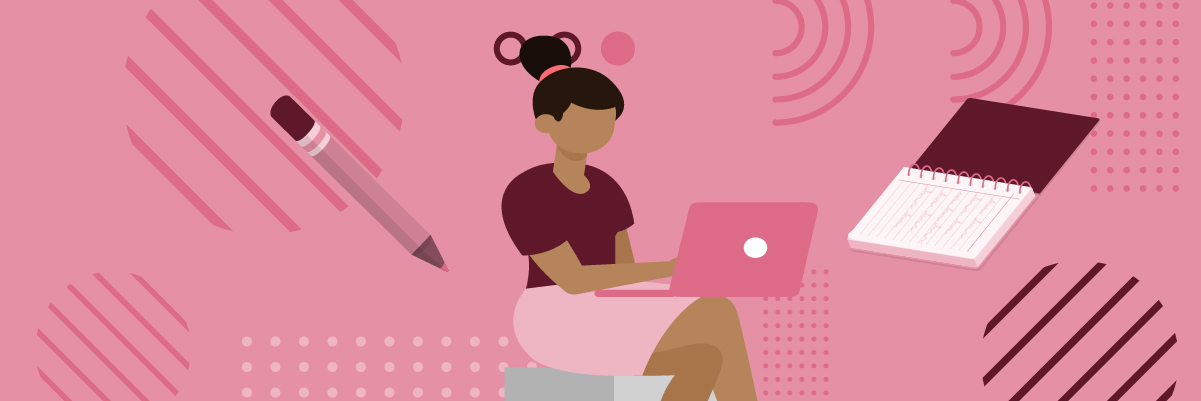Writing a book is the lifelong dream of many people. A chance to share your thoughts, your experience, your creativity, and well…tell an amazing story. While for some the process comes naturally, others may run into stumbling blocks or not know where to begin. However, there’s lots of support out there for you, from coaches to editors to illustrators for any book project, even ghostwriters. Read on and find that inspiration to write the book!
Where to start when it comes to writing a book
It’s so glamorous, right? You can hang out at that coffee shop at the little corner table, drinking lattes while you tap away at your laptop. The words will flow, the content will blend, and your plot will thicken. Before you know it, you’ll have written the most amazing book. And everyone will want to read it! Well, let’s back up a bit. As glamorous as it sounds, it’s not always that easy. We’ve all heard of writer’s block or inconsistent character development, or worse, the dangling modifier. Let’s avoid these at all costs. One way to do this is to begin with a strong plan for writing a book.

Organize
They say there are two types of writers – the ones who just go by the seat of their pants and the ones who have a clear outline for each step of the way. While this is completely up to you, some sort of plan is beneficial. It doesn’t have to be for every chapter of the book, but you should have some sort of timeline or plan for writing. This can include when to do research if needed, when to contact an editor, and how to go about publishing. It’s also not too early to decide if you’ll also want to go the audiobook route and where you’ll find the best voice actor. All of this falls under organization, and it’s great to start with a plan. Remember, plans can change, but they are a good guidepost to begin with.
For those of you who like to organize the writing itself, there are tons of great resources out there on styles of book planning. Some like to use notecards or apps on their phones. Some like to practice an elevator pitch/back cover technique, and others go through a technical outline. Take a little time to think about how you’ll go about writing and what you’ll need to do to get organized before you claim your table at the coffee shop.
What’s your book about?
Maybe you don’t know exactly what it’s all about yet, but what genre are we going for? Do you have an idea for the latest, greatest domestic thriller? Do you want to tell your grandma’s story of growing up in the 1950’s Southern US? What about the trials and tribulations you’ve faced with being a pioneer in your industry – could that help someone out? Don’t forget children’s books, either. These lovely works aren’t easy to write, but they can make a lifelong impression on maturing minds. And if it’s fiction, think about your audience… YA, middle years, the fantasy crowd…
Starting to write the book
Whew – who knew we’d have to think so much just get to ready to write. But don’t you feel better with a plan and knowing where you’re going? Now it’s time to get those words down. So, let’s head to the coffee shop, decide on your signature drink, and charge up your laptop.
You can follow the outline you’ve already created, and don’t worry about straying from your original plan. When a new idea sparks, see if it will work. Here are a few tips from writers when it comes to physically writing the book:
- Set a schedule. This could mean hours spent writing or a number of words to write each day. Many writers set a writing schedule to hold themselves accountable.
- Have resources at the ready. This means things like grammar programs, writing skills sources, even networking sources. You’ll love having these handy for when you need them rather than taking the time in the midst of a brainstorm to seek them out.
- Don’t be afraid to adapt. Things happen. Whether that means internally in your book or externally in your life. Maybe you have to take your dog to the vet during your writing time. Don’t let that skew your whole week. Just pick up when you can and move forward. If you see a plotline isn’t working, adapt. Don’t be discouraged; we all have bumps in the road to overcome.
- Do it. Get the words down! This is you expressing your creative flair or storytelling prowess. There’s nothing like writing that first chapter. You’ve got this!
Help!
Ok, maybe it’s not always easy. Admit when you need a bit of help writing a book and seek it out. Remember that list you came up with earlier, now it’s time to use it. Maybe you need a content writer to help with a certain part, or even a ghostwriter to take over. There’s no shame there, it’s still your idea, your thoughts; you just need a little helping getting it down.
If you think you’d like to work with a ghostwriter, our article, What is a Ghostwriter & How Can You Get Started?, has some great info on what makes a good ghostwriter. They need highly attuned attention to detail and the ability to step in your shoes. Also, the ghostwriter doesn’t have to do the entire thing, they can be there when you get stuck and need a hand.
Your first draft is done!
You’ve completed your first draft and can’t stop looking at it. You’re so proud, but now what? Well, you can begin to go back over it yourself, or you could pull in an editor now. Or both. You may catch some things that either don’t make sense, that you don’t like, or that need tweaking, adding, or deleting. An editor can spot inconsistencies, grammatical and structural weak spots, or anything like that. Remember, two sets of eyes are always better than one.
Some people like to go through their first draft on their own and hire an editor a bit farther down the process. That’s up to you, but don’t forego that step. Even if you’re self-publishing, a book riddled with mistakes and inconsistencies won’t do much for your career.
So what does an editor actually do? Let’s take a look at this important step in the writing process. An editor can:
- verify facts and dates
- check for consistent flow throughout (characters, plotlines, setting details)
- proofread for correct grammar, spelling, and punctuation
- work with a writer on publishing possibilities
- advise on length by adding or deleting scenes or chapters
And now it’s time to write another draft.
Illustrations
Here’s just one more thing to think about. Do you want illustrations? Whereas most adult fiction skips this step, many other genres have some sort of illustration, whether it’s graphics in a wellness book or chapter illustrations in a YA book. Of course, children’s books have vibrant illustrations that enhance the story. Depending on how you’ll publish your book, you may want to seek out an illustrator. Find someone who not only has the talent you’re looking for, but also the skill for seeing your vision.
Now you’re finished writing a book
So your editor has worked with you to check and recheck your book, and it looks like you have a great product in your hands. We have to ask again – now what? Now it’s time to get the book in the hands of a publisher. That can be a self-publishing service, a big publisher, Amazon – there are so many great options.
There may be a few more things for you to do before you send it out there, and these pre-publishing tips will help get your work noticed:
- Come up with a great title
- Format the book correctly
- Have great cover art that will convert from print to digital
- Familiarize yourself with your audience
- Optimize your description
You may also want to consider audiobook production or even translating your book into other languages. This can be a great idea if you’re setting is in a country with a different language.
You can see, there’s so much to do when it comes to writing a book, way beyond the writing!

Bunny Studio services
Writing a book can be a solitary time. There’s a lot of alone time and self-introspection. All those hours in the coffee shop and time spent on your computer. But don’t hesitate to call in help when you need it. And, remember, you will. Even if you don’t need help with the actual writing, check into hiring illustrators, editors, or voice actors for your audiobook version.
The great thing about working with Bunny Studio is all of our services are in the same place. From your editor to your illustrator, even a ghostwriter, we’ve got them all right here, and our sales team can help put a personalized package together for you.
The Bottom line on writing a book
Wow – writing a book! This is going to be amazing, and you can do it! Just remember to make that plan before you get started whether it entails outlining your novel, setting a writing schedule, or determining when to talk to an illustrator. Don’t be afraid to transgress from it as your book matures; modifying a plan is always okay! It’s a good idea to find some writing sources, from those on actual writing a book to grammar guides. This will help along the way.
And reach out to Bunny Studio for any service you need. If you want to hire a writer or editor or any other professional for getting your book ready to publish, we can help. We have proven professionals on our team who would love to lend a hand. So go order that latte, make friends with your barista, and open the laptop. You’re writing a book, and we can’t wait to read it!










